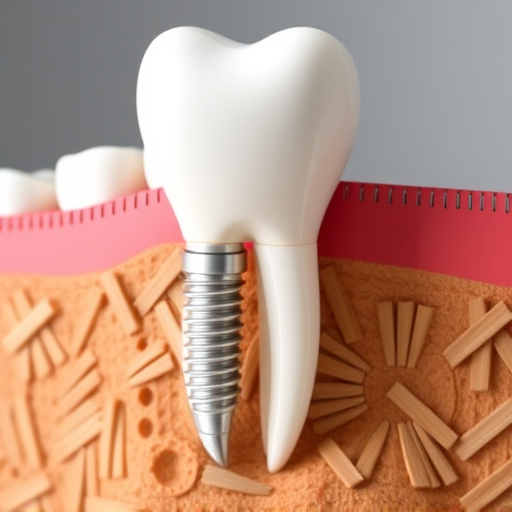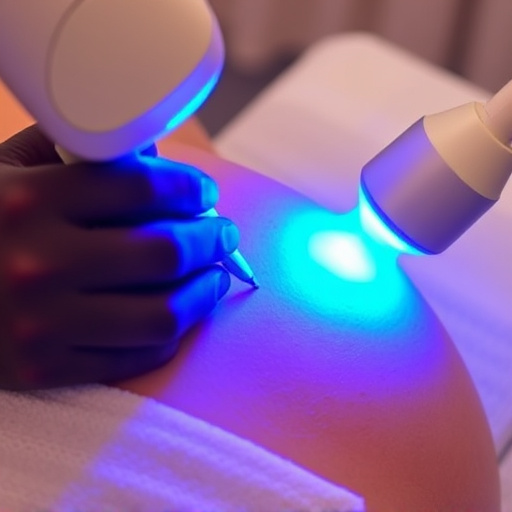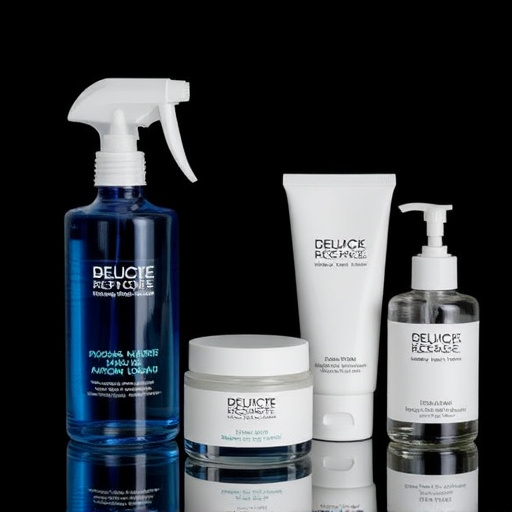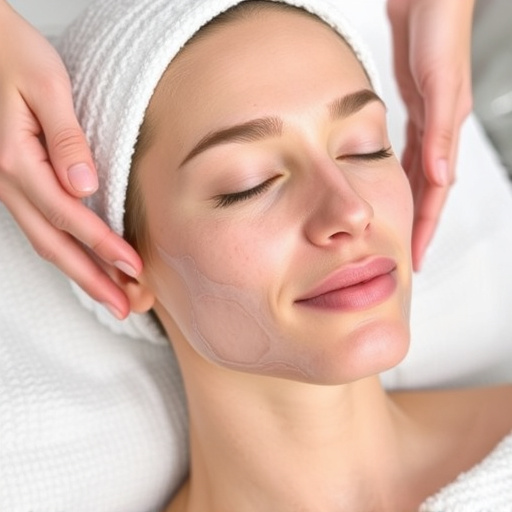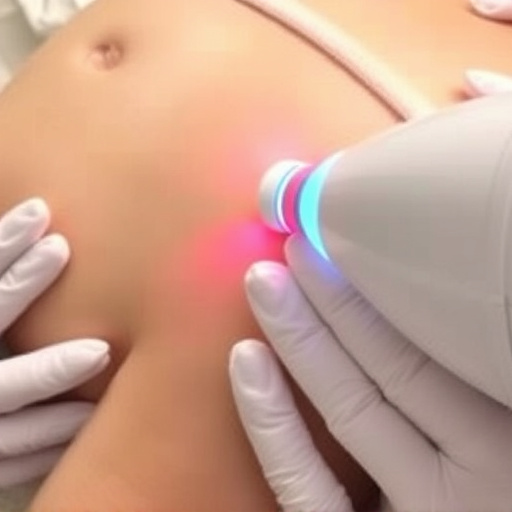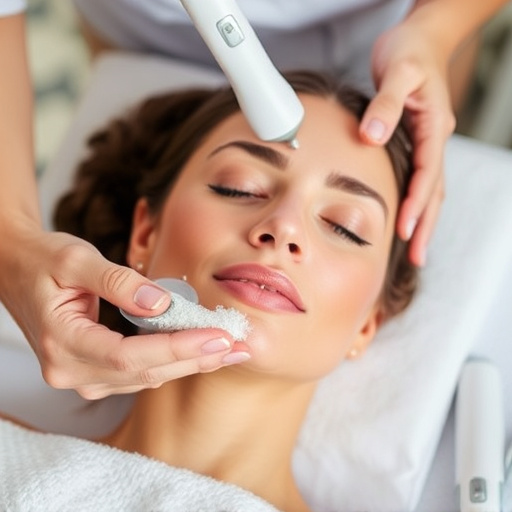Vitamin C facials effectively combat hyperpigmentation by stimulating collagen production, brightening and lightening skin, and protecting against environmental damage. Combined with treatments like microneedling, they enhance texture and tone, leaving skin radiant and healthy. This non-surgical procedure regulates melanin production, neutralizes free radicals, supports healthier collagen synthesis, and offers a gentle alternative to aggressive treatments. A guide for performing this facial includes face preparation, microneedling, application of professional vitamin C solution, optional hydrating mask, moisturizing, SPF protection, and regular follow-ups with a dermatologist.
Experience the transformative power of a Vitamin C facial for hyperpigmentation concerns. This potent antioxidant treatment has gained popularity for its ability to brighten and even out skin tone, addressing dark spots and sun damage. By delving into the science behind its anti-pigmentation properties, we’ll guide you through each step of this effective skincare ritual, offering a comprehensive approach to achieving a radiant, more uniform complexion.
- Understanding Vitamin C's Role in Skin Lightening
- The Science Behind Its Anti-Pigmentation Properties
- Step-by-Step Guide to a Vitamin C Facial Treatment
Understanding Vitamin C's Role in Skin Lightening

Vitamin C, a powerful antioxidant, plays a pivotal role in addressing hyperpigmentation and achieving a more even skin tone. When incorporated into your skincare routine through a vitamin C facial, it works synergistically with other active ingredients to lighten and brighten the skin. This process involves stimulating collagen production, which not only helps in skin lightening but also contributes to wrinkle reduction and overall skin tightening. The antioxidant properties of vitamin C also protect the skin from environmental damage, preventing further hyperpigmentation.
In conjunction with other treatments like microneedling therapy, a vitamin C facial can offer enhanced results. Microneedling creates tiny channels in the skin, allowing for better absorption of active ingredients, including vitamin C. This combined approach can significantly improve skin texture and tone, leaving your complexion looking radiant and healthy.
The Science Behind Its Anti-Pigmentation Properties

Vitamin C facial is a popular non-surgical treatment that harnesses the power of this essential nutrient to address various skin concerns, including hyperpigmentation. The science behind its anti-pigmentation properties lies in vitamin C’s unique ability to regulate melanin production. Melanin is responsible for giving our skin its color, but an overproduction can lead to dark spots and uneven skin tone—a common issue often associated with acne treatments or other environmental factors. Vitamin C acts as a powerful antioxidant, neutralizing free radicals that damage skin cells and stimulate the overactivity of melanocytes, the cells producing melanin.
By promoting healthier melanin distribution, vitamin C facial helps to lighten hyperpigmented areas and even out skin tone. Additionally, this potent antioxidant supports collagen synthesis, which is crucial for anti-aging treatments as it improves skin elasticity and texture. The brightening effect of vitamin C facial can be particularly beneficial for those looking for effective yet gentle alternatives to other aggressive treatments like chemical peels or laser procedures, offering a safer approach to tackling pigmentation issues without inciting further skin damage.
Step-by-Step Guide to a Vitamin C Facial Treatment
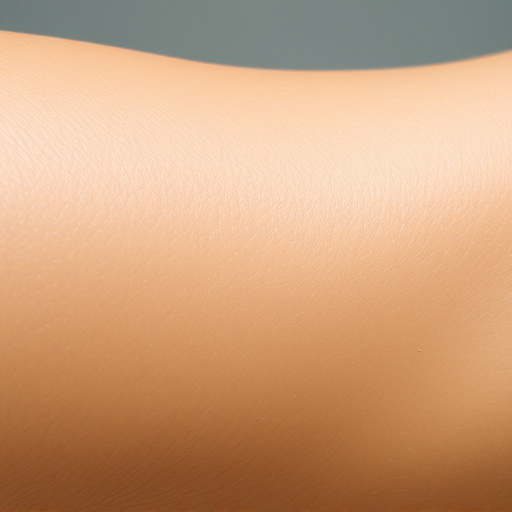
A vitamin C facial is a powerful treatment that can significantly improve hyperpigmentation issues. Here’s a step-by-step guide to help you get the most out of this skin brightening therapy:
1. Preparation: Start by cleansing your face thoroughly with a gentle cleanser. This removes any makeup, dirt, or oils that might clog pores. Pat your face dry and apply a thin layer of a vitamin C serum to prepare your skin.
2. Microneedling Therapy: Using a microneedling device or roller, gently prick the skin with fine, controlled punctures. This creates tiny micro-channels that enhance absorption of the vitamin C treatment. Make sure to follow the manufacturer’s instructions for safety and proper use.
3. Application of Vitamin C Solution: After microneedling, apply a professional-strength vitamin C solution to your face. These solutions are formulated to penetrate deep into the skin and target melanin production, helping to reduce hyperpigmentation. Leave it on for the recommended time as per your dermatologist’s advice.
4. Masking (Optional): Some treatments include applying a hydrating or calming mask after the vitamin C solution. This helps in sealing in moisture and soothing the skin post-procedure.
5. Final Touches: Remove the mask (if used) and apply a moisturizer suitable for sensitive skin to lock in hydration. Avoid direct sunlight, and always use a broad-spectrum sunscreen with at least SPF 30 during the day. Regularly follow up with your dermatologist to monitor progress and maintain results, as skin tightening benefits can also be observed over time.
A vitamin C facial treatment offers a potent solution for hyperpigmentation, leveraging the skin-lightening properties of this powerful antioxidant. By understanding how vitamin C inhibits tyrosinase and promotes collagen production, you can effectively navigate the step-by-step process outlined in this guide to achieve a more even skin tone. Incorporating regular vitamin C facial routines into your skincare regimen may be just the game changer you need for clearer, brighter skin.





